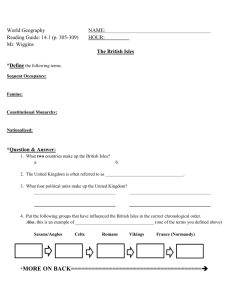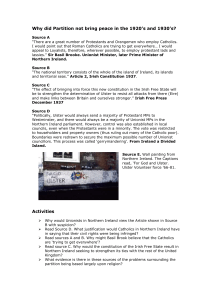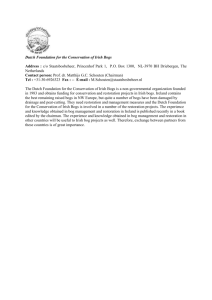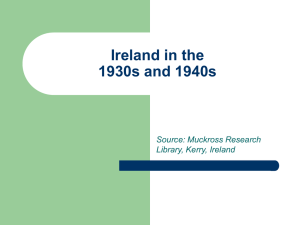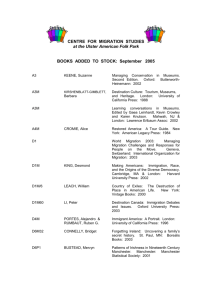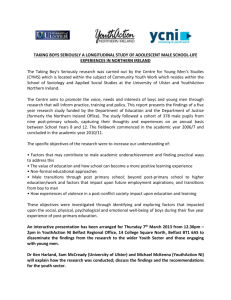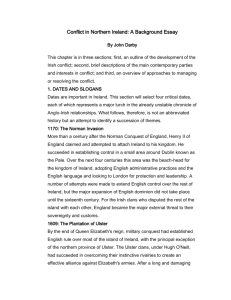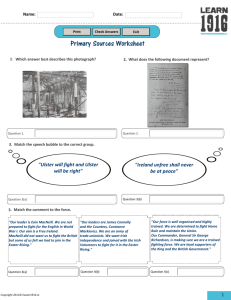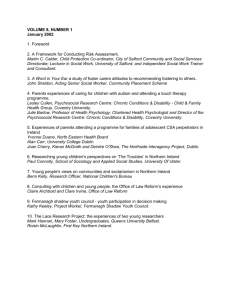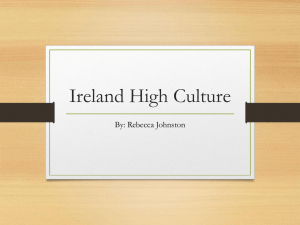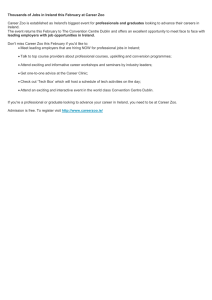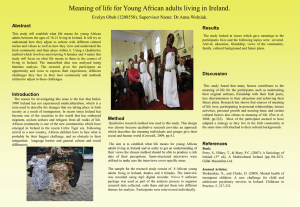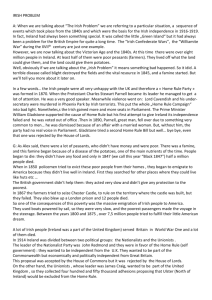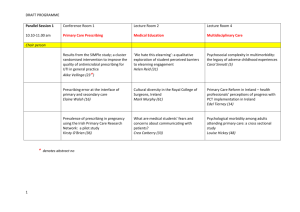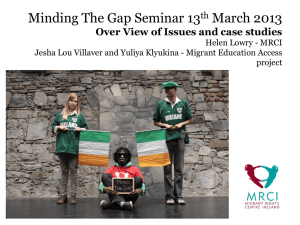PowerPoint Presentation - The Geography of Ireland
advertisement
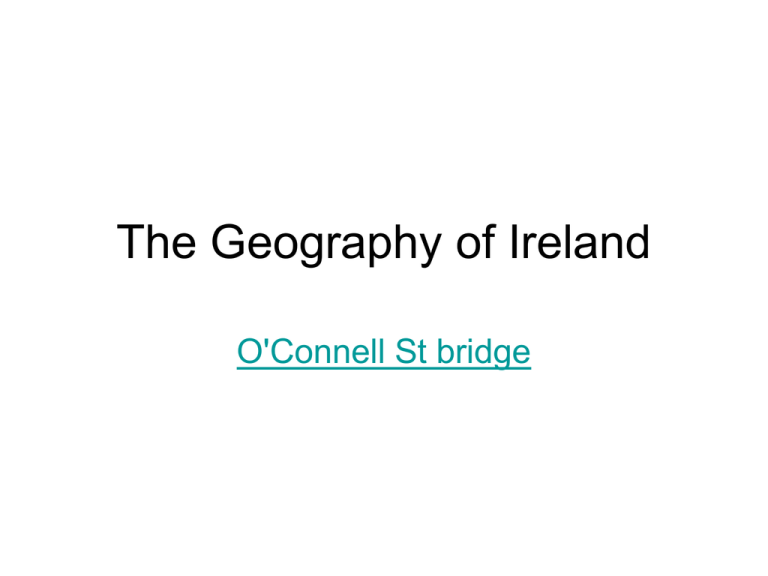
The Geography of Ireland O'Connell St bridge Introduction • Western edge of Europe • A small island: little larger than West Virginia • Temperate climate washed by the Gulf stream – On the same latitude as Moscow & the Aleutians • Strategic location between North America & Europe (US military stopover) • Proximity to Great Britain Geological Origins • Pangaea split apart 200 mya – Present-day Ireland was connected to Newfoundland • Animation of Ice Age Progress of Ice Age • During Ice Age, there was a land bridge to the British Isles • With end of Ice Age ~11,500 ya – Sea level rose – Land bounced back from the heavy weight of the glaciers • The British Isles are detached from the European continent: – first Ireland then Great Britain • Landscape would evolve from shrubs to grasslands to forests to farm land The Irish Giant Deer • Main features shaped by volcanic activity, glaciers and rain – Erosion removed layer that elsewhere contains coal, iron ore – Rain also crucial to the formation of bogs – With agriculture, reinforcement of spread of bogs, the Burren Bogs & peat The Burren • The bowl shape of Ireland • Main geographic divisions are between Ulster in the north and between the east and west • The north and west are rainier, the south and east drier (the Pale) • Climate has encouraged cattle raising historically The Four Provinces Cultural factors • Culturally tied into the ‘Atlantic ends’ – Human settlement out of Scotland or Denmark or Spain • Later the proximity to Scotland would profoundly influence the colonization of Ulster • The mix of uplands and lowlands in the northeast would mean that the Catholic population would remained mixed with the Protestant Environmental concerns • Growth of urban populations – Eutrophication • Pollution from agricultural runoff into streams, rivers – Deforestation – Disappearance of picturesque small farms Impact of Global Warming • May disrupt the action of the Gulf stream • May extend growing season, dry up peatlands Main Sources • CIA World Factbook • Michael Viney, Ireland: A Smithsonian Natural History • The Course of Irish History, Moody & Martin
